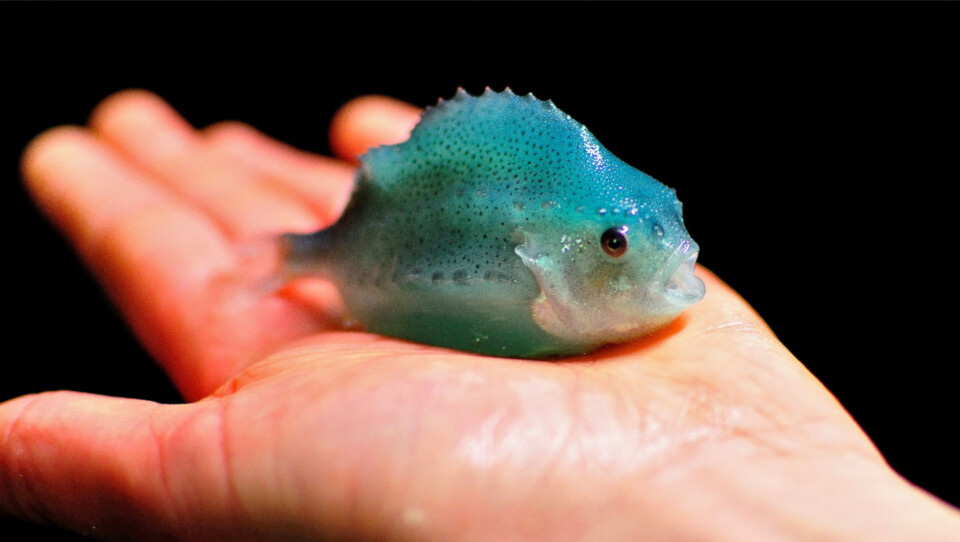
Pasteurella 'more of a risk to lumpfish than to salmon'
Atlantic salmon appear to be less susceptible to pasteurellosis than lumpfish, the commonly used cleaner fish for the control of sea lice, new research suggests.
The study, carried out at the Institute of Marine Research (IMR) in Norway and supported by Pharmaq Analytiq, exposed 206 salmon smolt to strains of Pasteurella — the bacterium that causes the disease — derived from both species, using both bath immersion and cohabitation with lumpfish previously challenged. A total of 109 lumpfish were also challenged with both strains.
90% mortality
While no salmon showed clinical signs of disease over the course of the experiment, all lumpfish showed pathological signs, with a final cumulative mortality of around 90%. Notably, more acute clinical signs were observed in lumpfish challenged with the salmon isolate than with that from lumpfish.
“This finding indicates lumpfish to be equally susceptible to Pasteurella isolates isolated from both salmon and lumpfish and that the isolate originating from salmon is highly virulent to lumpfish,” the researchers said.
Disease presented differently in lumpfish, depending on which strain they were infected with. Infection with the lumpfish isolate caused bacterial aggregations on the fish’s organs, which were not present in lumpfish infected with the salmon strain. Instead, the more severe pathogenic effects of the salmon strain resulted from the dissolving of tissue, causing severe inflammation.
The salmon showed no clinical signs of disease, but deeper analysis using both polymerase chain reaction (PCR) testing and tissue sampling saw one individual testing positive for Pasteurella in internal organs after being exposed to the salmon strain, while four tested positive in skin and gills following exposure to the lumpfish strain. These specimens, however, showed an overall lower level of Pasteurella than was seen in lumpfish.
The findings of the work pose questions about the route of disease transmission to salmon in the field.
“The fact that farmed Atlantic salmon develop pasteurellosis in a farmed situation suggests that other factors in addition to the Pasteurella bacteria have to be present for an infection to develop. Such factors may be environmental or linked to the general health of the fish such as chronic stress, handling or co‐infection with other pathogens,” the study’s authors explained.
Other pathogens
When outbreaks of pasteurellosis occur, more often than not other pathogens as well as Pasteurella are present, complicating the clinical picture, they noted.
“Farmers have reported that the clinical signs sometimes change from one outbreak of pasteurellosis to the next. This raises the question of whether or not Pasteurella spp. are to be regarded as a secondary pathogen to Atlantic salmon or whether handling and treatment reduce the health of the salmon in a manner that allows for establishment of Pasteurella spp. with subsequent outbreaks,” they continued.
Lumpfish and species of wrasse are the most commonly used cleaner fish in commercial aquaculture, with nearly 60 million such fish used in the Norwegian industry in 2019 alone. Cohabitation of salmon and lumpfish is particularly prevalent in Norwegian aquaculture, as lumpfish is easily reared and shows better delousing activity at lower temperatures, the scientists said.
Although Pasteurella has been observed in Atlantic salmon in Norwegian aquaculture in the late 1980s and in lumpfish in 2012, incidents of pasteurellosis among salmon in 2018 raised concerns about cross-species transmission in production settings.
No commercial vaccine
There is currently no commercially available vaccine against pasteurellosis in lumpfish or salmon [although Mowi has used its own to combat Pasteurella Skyensis in Scotland – editor]. While the research suggests salmon are not at high risk of pasteurellosis compared to the cleaner fish, it highlights the need for further work, not only to establish both the factors leading to disease outbreaks, but also how to best experimentally challenge fish with what remains an emerging pathogen of interest in salmon aquaculture.
“It is evident that more knowledge on topics such as the difference in isolate virulence, development of disease and evolution of new pathogenic genotypes in polyculture production of fish is essential to increase the welfare of farmed fish,” they concluded.
This article is reproduced from the Pharmaq-sponsored website fishhealthforum.com.
To view the full article in Journal of Fish Diseases, click here.






















































